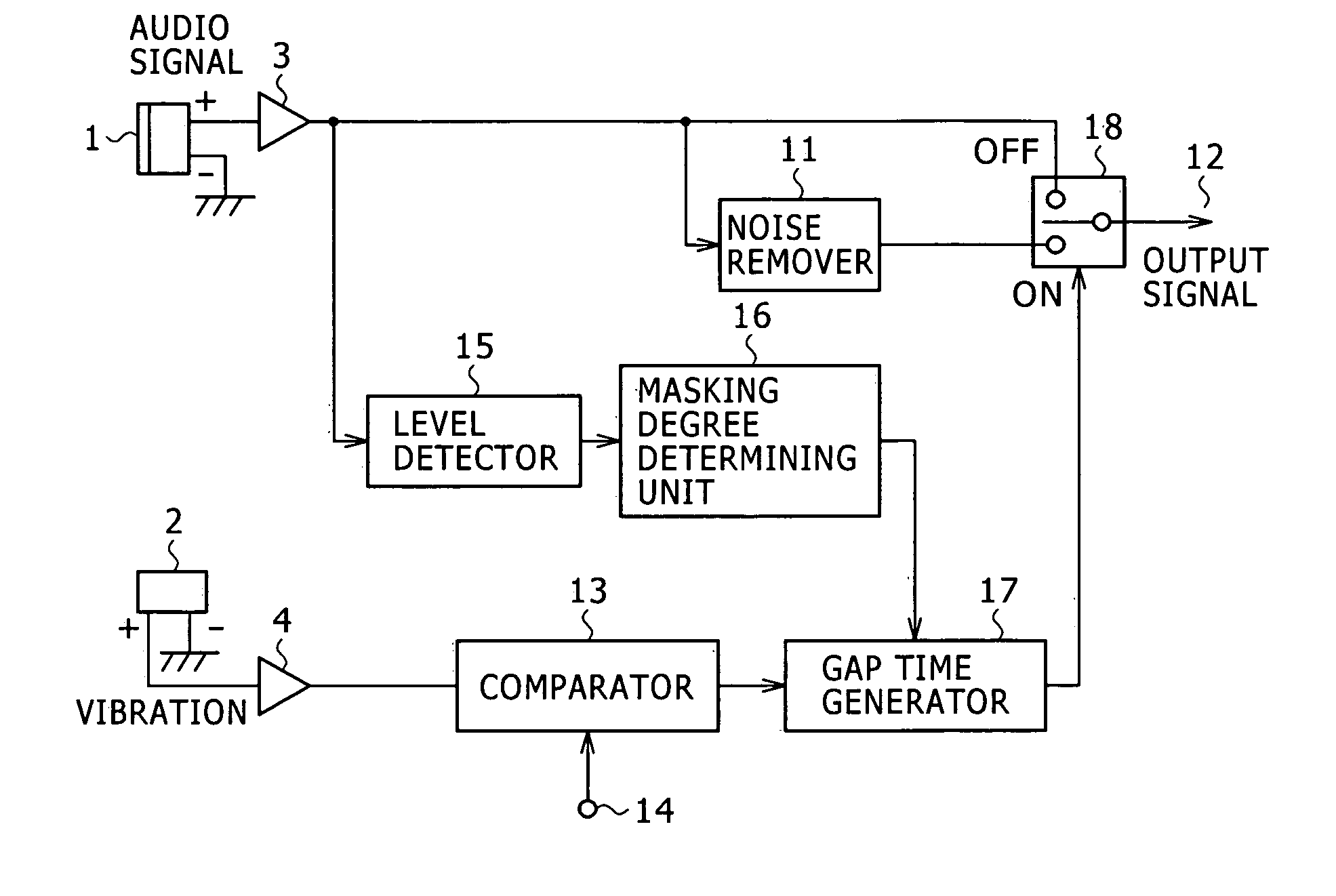Method of and apparatus for reducing noise
a technology of noise reduction and noise reduction, applied in the field of noise reduction methods and apparatuses, can solve the problems of user inability to suppress all vibrations, ineffective structures, and inability to reduce noise, so as to reduce noise, improve noise reduction effect, and facilitate masking
- Summary
- Abstract
- Description
- Claims
- Application Information
AI Technical Summary
Benefits of technology
Problems solved by technology
Method used
Image
Examples
Embodiment Construction
[0047] Digital consumer electronics apparatus incorporating a small-size microphone in their cabinet, e.g., video cameras, digital cameras, etc. are becoming smaller and smaller in size in recent years. Therefore, the recording / reproducing device, which includes a tape device or a disk device, in such an apparatus is positioned closely to the microphone, and tends to apply mechanical shock noise produced thereby easily to the microphone. Because of the small size of digital consumer electronics apparatus, when the user operates a zooming or focusing controller or any of various functional switches while in a camera exposure mode, it is often for the user to inadvertently touch a cabinet area near the microphone, causing noise to propagate through the cabinet to the microphone. Therefore, when in a reproducing mode, undesirable touch noise or click noise is possibly reproduced from the apparatus. While in the case the apparatus operates in the camera exposure mode in a relatively qui...
PUM
 Login to View More
Login to View More Abstract
Description
Claims
Application Information
 Login to View More
Login to View More - R&D
- Intellectual Property
- Life Sciences
- Materials
- Tech Scout
- Unparalleled Data Quality
- Higher Quality Content
- 60% Fewer Hallucinations
Browse by: Latest US Patents, China's latest patents, Technical Efficacy Thesaurus, Application Domain, Technology Topic, Popular Technical Reports.
© 2025 PatSnap. All rights reserved.Legal|Privacy policy|Modern Slavery Act Transparency Statement|Sitemap|About US| Contact US: help@patsnap.com



